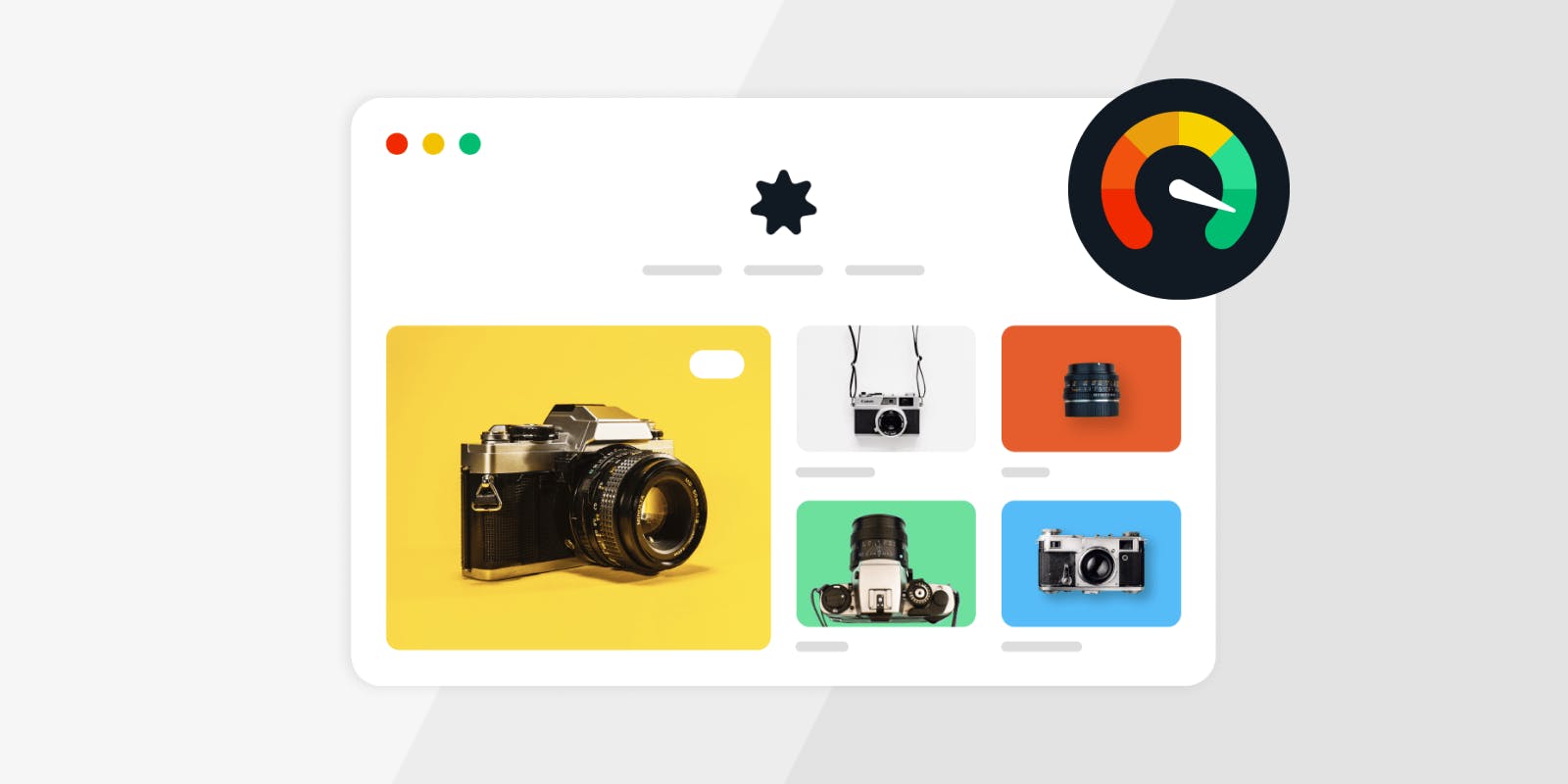As e-commerce becomes mainstream, the digital marketplace is becoming more competitive. To stand out amongst the noise, your site needs to perform at the top of the game. It needs to be fast— e-commerce giant Shopify cited research which found 79% of customers who are dissatisfied with the performance of a site are less likely to be repeat customers, and 47% of online shoppers expect web pages to load in two seconds or less.
1. Make your images high-quality and fast-loading
High-quality images are essential for any successful e-commerce experience. But the speed at which images are delivered is also a critical component. Since images tend to be the most appealing but the largest page components, you need to strike the right balance between serving the highest-quality images at the fastest speed possible. In an analysis of mobile devices, Google reported that 79% of pages were over 1 MB in size, leading to slow pages. But by simply compressing images and text, a quarter of pages could save more than 250 KB, or 10% of the average page weight. To automate image compression and resizing, consider using an intelligent API solution.
2. Improve mobile responsiveness
This might seem like a given. Consumers are becoming increasingly mobile. Insider Intelligence forecasts that mobile commerce (m-commerce) in the United States will nearly double its share of total retail sales between 2020 and 2025. Delivering responsive images and videos is a great way to improve user satisfaction and increase chances for sales. To do this, choose software that can dynamically adjust resolution and art direction based on the user's device.
3. Optimize and encode videos for better streaming
Video buffering creates a frustrating user experience. If you stream videos using YouTube, the competitor pre-roll ads can hijack customers' attention from you. To counter these concerns, consider solutions that give you full control over the streaming experience. Video optimization APIs, like this one from imgix, can help you stream videos without interruption using Adaptive Bitrate Streaming (ABS), which adjusts the bitrate in real time based on the viewer’s bandwidth.
4. Use a fast and reliable visual media CDN
Using a state-of-art Content Delivery Network (CDN) means you can provide faster delivery of your content. By choosing a CDN with edge nodes located in major Internet exchange points around the world, you can minimize latency and reduce transfer times. Solutions like imgix combine fast delivery with worldwide reach, modern web protocols, and advanced visual media processing.
5. Minify your HTML, CSS & JavaScript
Why is it important to minimize code and markup on your website and script files? It all comes back to speed and accessibility. Minifying code means a reduction in load times and bandwidth usage on your websites - meaning even customers with a low-speed connection or low-data plan can access your site easily.
6. Consider a headless e-commerce platform to build a fast and nimble site
Many e-commerce sites use traditional CMSes that put everything into one big bucket, from content and images to HTML and CSS. These inflexible monolithic CMSes make it difficult to reuse content components. As organizations compete to provide omnichannel experiences, better web performance, and user personalization, this method is no longer sustainable. An API-first headless CMS empowers organizations to quickly respond to changes in their business and the external market by separating the content from the context.
7. Create clear and easy site navigation and categorization
A web usability report conducted by KoMarketing found that almost 40% of respondents would leave a site completely due to poor experience with site navigation. The takeaway: the more organized your e-commerce site is, the less likely it is for your customers to drop off.
8. Use fast and reliable hosting, such as Vercel or Netlify
Hosting is a fundamental part of any website. Taking hosting a step further is the idea of using serverless platforms for your hosting. To allow your developers to focus on writing code and developing efficiency for your operations, choose hosting services like Netifly and Vercel that allow you to launch your e-commerce site with minimum hassle.
9. Set up site A/B tests to ensure the customer journey is seamless
We all know how customer journeys can impact end results. Statists found that nearly 45% of worldwide organizations highlight the customer journey as a main differentiator among their competition. A/B testing allows you to test different aspects of that journey to figure out the best path for your target audience and gives you data-based evidence for decisions that can result in increased conversion rates and decreased bounce ones.
One Solution for All Your Visual Media Needs
E-commerce has been on the upswing and will continue to open up a world of possibilities for shoppers. Using tools like imgix will make your site faster, more responsive, and more visually appealing. Deploying imgix is fast and easy. It eliminates development hassle, reduces tedious work for any team that works with visual media, and simplifies the image and video workflow.








